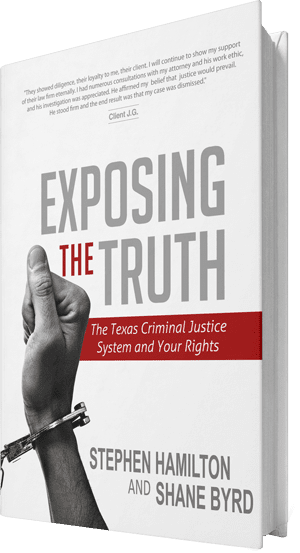
Get Your FREE Copy of the Book by Stephen Hamilton
EXPOSING THE TRUTHSecrets of the Texas Criminal Justice System and Your Rights
Possession offenses involving Schedule III controlled substances are more likely to be prosecuted in state courts than in federal courts. Federal law enforcement officials tend to concentrate on Schedule I and II drugs. If federal authorities believe that a dealer is trafficking a significant quantity of a Schedule III drug, however, they might decide a federal prosecution is worthwhile.
One of the most commonly prescribed Schedule III drugs is hydrocodone, a pain reliever that is marketed (in combination with acetaminophen) as Vicodin® and Lortab®, among other products. Illicit distributors generally acquire the drug through doctor shopping, forged prescriptions, or theft from pharmacies. Another common Schedule III drug, although less frequently abused, is Tylenol® with Codeine. Like hydrocodone, codeine is used for pain relief and as a cough suppressant.
The other Schedule 3 substances most likely to result in a federal prosecution are anabolic steroids. Most anabolic steroids prescribed in the United States are testosterone-based. They are used to treat testosterone deficiency, anemia, breast cancer, and a few other conditions. Unlike most other illegally distributed drugs, steroids are not ingested recreationally for the purpose of getting high. Most steroid abusers are bodybuilders, weight lifters, and athletes who seek the competitive advantage or muscular appearance that steroids help them attain. Most anabolic steroids that are sold illegally in the United States are manufactured in other countries, usually in higher dosages than are prescribed by doctors.
A federal sentence for distributing (or possessing with intent to distribute) a Schedule III drug, or for a conspiracy to distribute a Schedule 3 drugs, depends upon whether the defendant has a prior drug conviction under state or federal law and whether a serious injury or death resulted from use of the distributed drug. If serious injury or death results from the distribution of a Schedule III drug, a mandatory minimum penalty applies.
The maximum penalties described above may increase substantially and different mandatory minimum penalties may apply if:
In addition to a potential prison sentence, fines and costs can be imposed, as well as a term of supervised release.
Simple possession is the term used to describe possession of a drug for personal use. Not with the intent to distribute the drug to others. The range of sentences available for simple possession of a Schedule III drug depends upon whether the defendant has a prior conviction for a drug offense under state or federal law.
In conclusion, for more information on this topic please reach out to our experts from the Texas Criminal Defense Group at (866) 557-4343 or through our contact page.
© 2024 Texas Criminal Defense Group. All Rights Reserved. | Privacy Policy